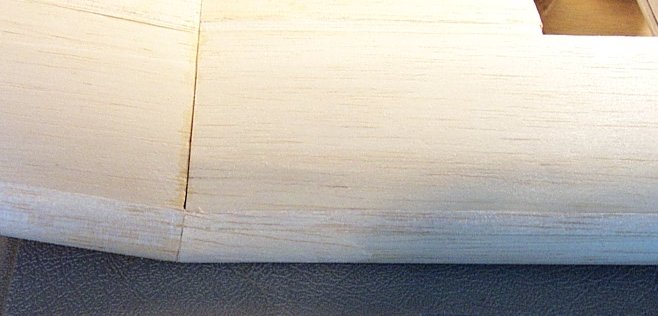It seems like every time I build an airplane I make at least one major mistake. Most of the time these errors can be fixed easily. One of the great things about model airplanes is that the materials they are built of are usually not as strong as the glue that holds them together, so it’s simple enough to glue pieces of wood into damaged areas to repair them.
When I built a 40 sized Telemaster from Hobby Lobby plans by Joe Bridi, I decided to power the plane with an OS 52 Surpass on a Dave Brown mount, with the cylinder pointed to the right. It seemed like a pretty good idea to mark the firewall and drill it for screws, throttle cable and fuel lines before gluing it to the front of the airplane. Unfortunately I was having a little bit of trouble with my clamps shifting around, and in the momentary confusion I attached the firewall upside down.
I didn’t want the engine at the bottom of the firewall pointing left. I certainly didn’t want to remove the firewall from the airplane because it would destroy the front of the fuselage. The most practical solution was to fill the holes with dowels and epoxy, and drill new ones. Here’s what it looked like after the repair.
You can see the incorrect throttle location on the left side of the firewall (your right, the plane’s left). This got filled with epoxy when I added the triangle stock to the inside of the plane. The new location was drilled on the right side of the firewall (your left, the plane’s right). The screw holes and fuel line holes were drilled to the next larger size to match standard 1/4″ and 3/16″ dowels, then quarter inch pieces of dowel were glued into the holes. Remaining cracks and spaces were filled with glue. The whole firewall was then sanded smooth, marked, and drilled for the correct mount location.
You can use similar tricks to fill voids and other shortcomings in balsa wood. Sometimes I receive some very flattering compliments on my Monokote work. If only they knew what was underneath. I don’t take a lot of trouble to get things perfect on the inside where they won’t be seen. For example, when I was putting wingtips on this same Telemaster all I could find in my balsa stash was an old piece of narrow but very thick aileron stock. Unfortunately the stock was just 1/16″ short of being the same size as the wings. Instead of buying a bigger stick, I simply attached the one that was too small and filled the gap at the tallest part of the airfoil with a very small piece of 1/16″ balsa wood from my scrap box. It’s a pretty simple improvisation, and you’ll never see it after the plane is covered.
When I joined the wing halves I noticed that I had gotten a bit carried away sanding the last 2 inches on the inboard end of one of the leading edge sticks, and it was about 1/16″ shy of the size of the other wing’s leading edge. I went ahead and joined the wings so they would line up at the trailing edge, then I wrapped a piece of 1/16″ balsa wood onto the thinner leading edge to fill it out. A sanding block brought it down to the correct level to match the other wing. If you look carefully at the wing on the right side of the photo, you can see where the wood grain doesn’t quite match, right next to the center line. This is where the extra piece of wood got wrapped around the leading edge stick.

If you’re dealing with spars or other heavy load bearing members, you should make sure the piece is strong enough to carry the load. But if you have a hole, gap, crack or other flaw that doesn’t compromise strength, just stick a piece of balsa in there and glue it together. After you cover it up, nobody will ever know.


